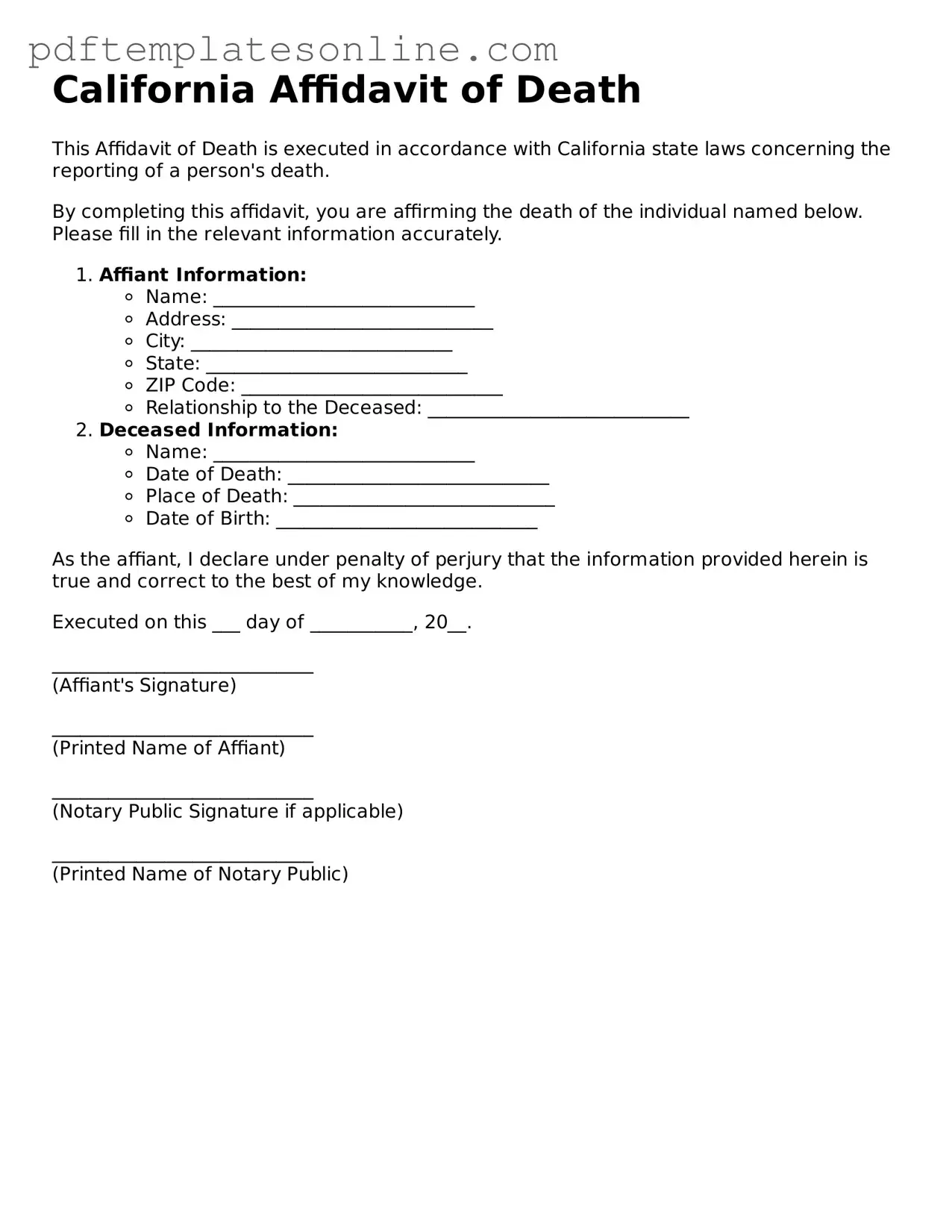Filling out the California Affidavit of Death form can be a straightforward process, but many people still stumble along the way. One common mistake is failing to provide complete information. When it comes to details like the decedent's full name, date of birth, and date of death, accuracy is key. Omitting even one piece of information can lead to delays or complications in the processing of the affidavit.
Another frequent error involves the signature. The form must be signed by the appropriate parties, which typically includes the affiant or the individual making the declaration. If someone neglects to sign or uses a signature that doesn’t match their printed name, the form may be deemed invalid. It's always a good practice to double-check signatures before submitting any official documents.
People often overlook the importance of notarization. The California Affidavit of Death form usually requires a notary public to witness the signing. Failing to have the document notarized can result in rejection. Ensure that you have a notary available when you complete the form to avoid any hiccups.
Another mistake is misunderstanding the purpose of the affidavit. Some individuals mistakenly believe that the affidavit serves as a will or a means to distribute assets. Instead, it primarily serves to officially declare the death of an individual for legal purposes. Knowing its function can help in filling it out correctly and understanding the subsequent steps in the process.
Lastly, many people forget to check for additional requirements that may apply in specific situations. For instance, if the decedent had multiple heirs or if there are disputes regarding the estate, additional documentation may be necessary. Always research any unique circumstances surrounding the death to ensure that the affidavit is complete and meets all legal requirements.
